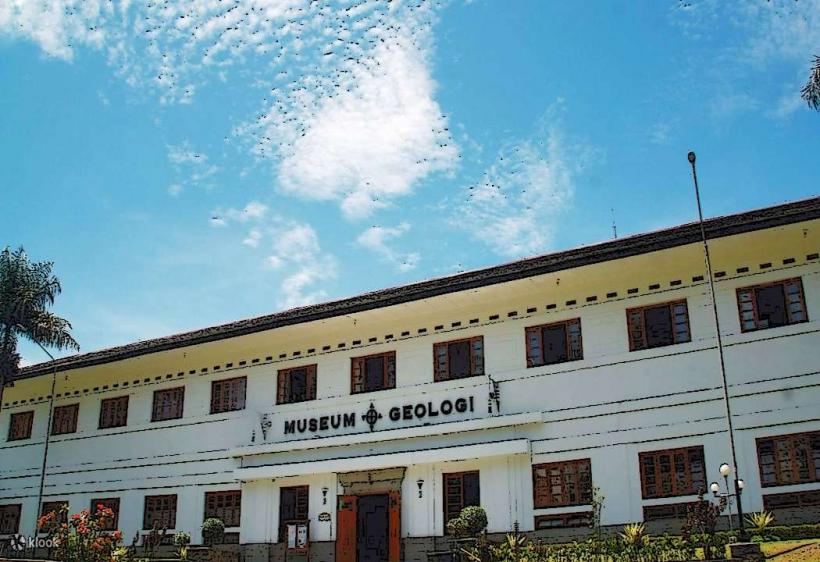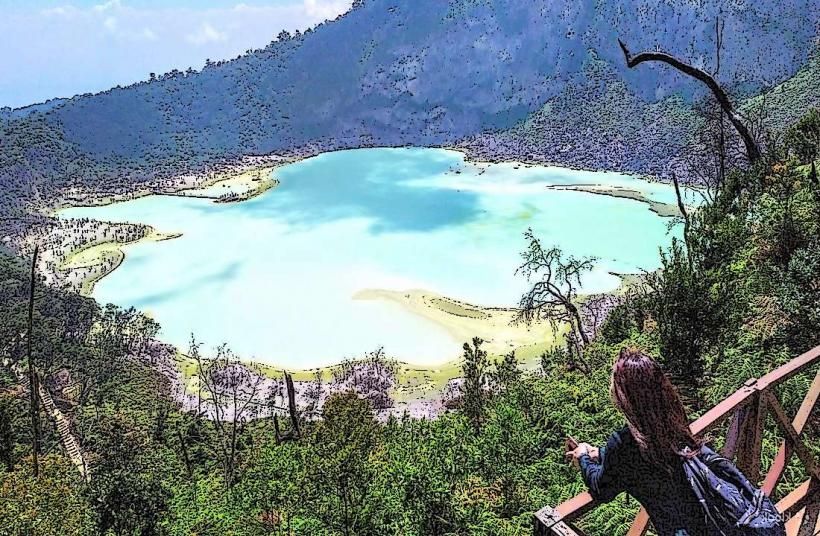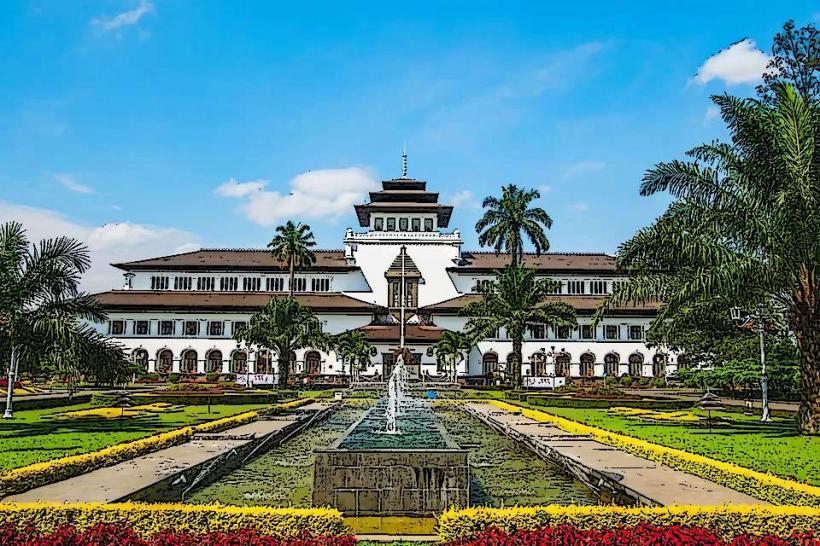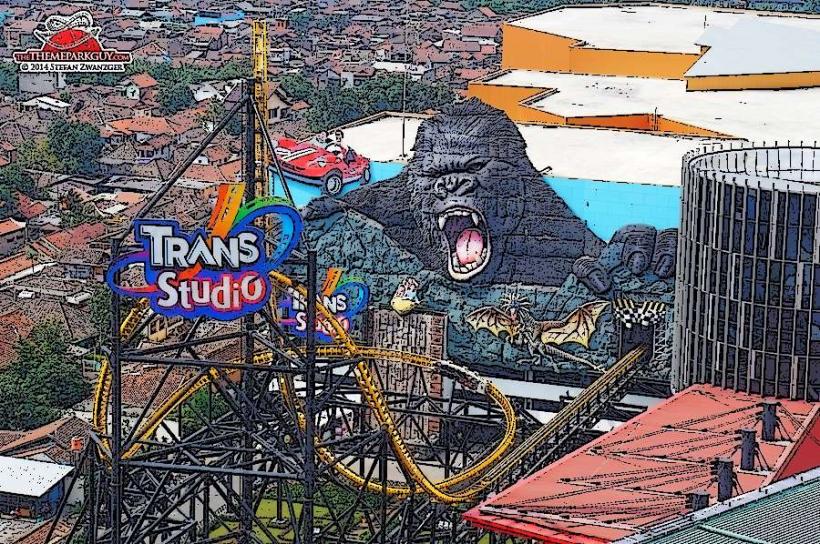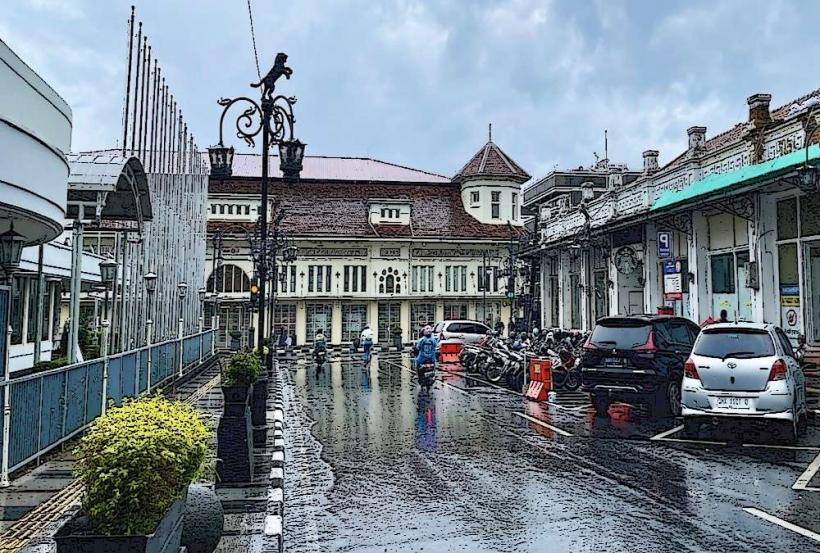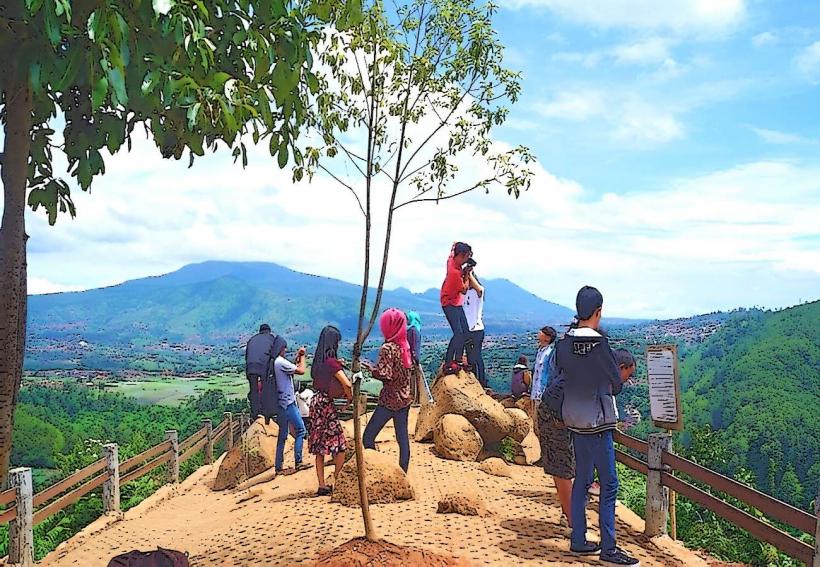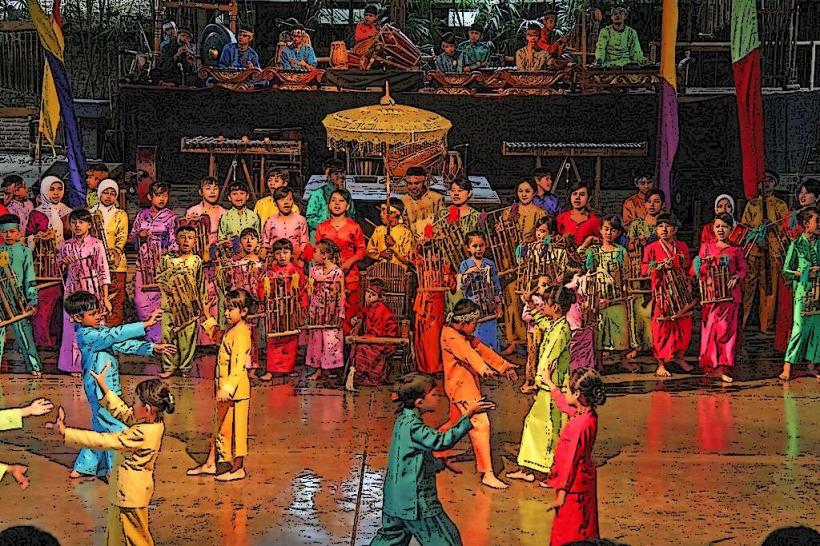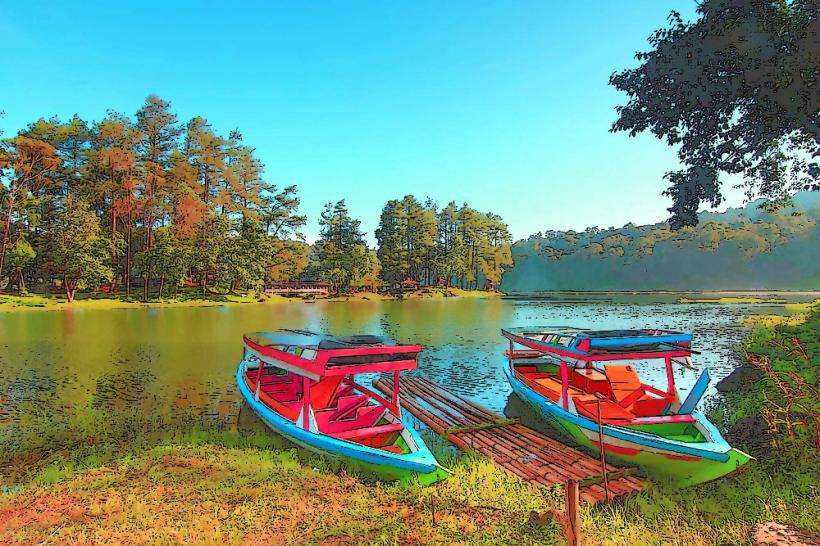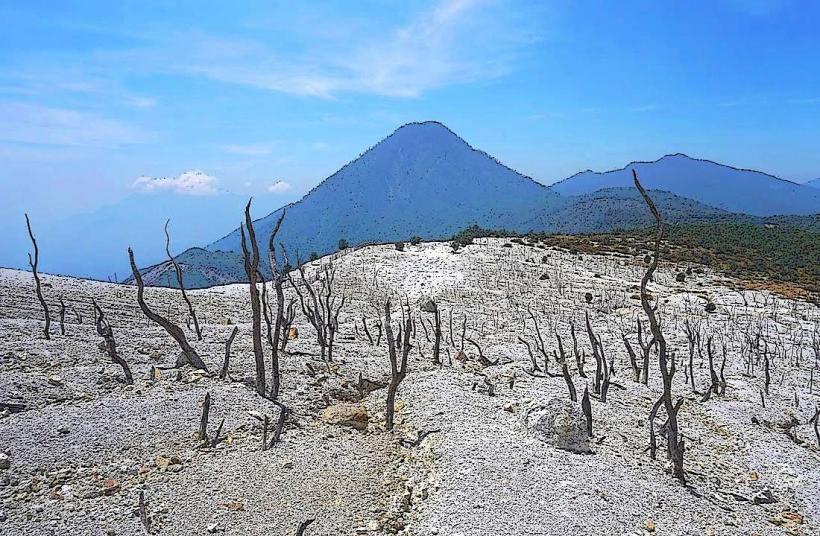Information
Landmark: Tangkuban Perahu VolcanoCity: Bandung
Country: Indonesia
Continent: Asia
Tangkuban Perahu Volcano
Tangkuban Perahu is an active stratovolcano located about 30 kilometers north of Bandung in West Java, Indonesia. It is one of the most iconic volcanoes in Indonesia, famous for its unique shape and accessible craters, making it a popular tourist destination. The name Tangkuban Perahu translates to "upturned boat" in Indonesian, referring to the shape of the volcano's crater, which is said to resemble an overturned boat from local folklore.
Overview
- Name: Tangkuban Perahu Volcano
- Location: Lembang, Bandung, West Java, Indonesia.
- Type: Stratovolcano (composite volcano).
- Height: Approximately 2,084 meters (6,837 feet) above sea level.
- Last Eruption: The most recent eruption occurred in 2019. However, the volcano is still considered active, with occasional fumarolic activity and minor eruptions.
Geological Features
Crater and Caldera:
- Tangkuban Perahu features a massive crater at its summit, which is one of the main attractions for visitors.
- The volcano has several craters, with the Kawah Ratu (Queen Crater) being the largest and most famous. It is a sulfuric crater that releases sulfur gas and steam, giving off a distinct odor.
- The Kawah Domas (Domas Crater) is another notable crater where visitors can see boiling mud pools and fumaroles.
Active Geothermal Area:
- The area surrounding Tangkuban Perahu is rich in geothermal activity, with hot springs, steam vents, and boiling mud pools.
- The volcanic soil is fertile and supports agriculture, with nearby farms producing a variety of crops, including vegetables, tea, and flowers.
Tectonic Setting:
- Tangkuban Perahu is part of the Ring of Fire, a region known for its high seismic and volcanic activity due to the movement of tectonic plates.
- The volcano is primarily formed by the subduction of the Indo-Australian plate beneath the Eurasian plate, a process that generates magma and leads to volcanic eruptions.
Cultural Significance
- The volcano is not only a geological wonder but also holds a place in local Javanese folklore. The name "Tangkuban Perahu" is derived from a legend about a prince named Sangkuriang, who fell in love with his own mother, Dayang Sumbi. When he tried to build a boat to sail her across the lake, the gods intervened, and the boat was turned upside down, giving the volcano its distinctive shape.
- The volcano is a part of the local cultural landscape, and local communities often associate the mountain with traditional ceremonies and rituals.
Tourism and Activities
Crater Viewpoints:
- Visitors can drive or hike to the crater rim, where they can enjoy panoramic views of the craters and the surrounding area.
- Kawah Ratu, the largest crater, has an accessible viewpoint that allows visitors to look down into the crater and observe the sulfur deposits and steaming vents.
- Kawah Domas offers an interactive experience where visitors can witness boiling mud pools and sulfuric steam emanating from the ground.
Hot Springs:
- The area surrounding Tangkuban Perahu is known for its natural hot springs, which are rich in sulfur and minerals.
- Hot spring resorts near the volcano, like those in Ciater, allow visitors to relax and soak in the therapeutic waters while enjoying the beautiful mountain scenery.
Trekking and Hiking:
- Tangkuban Perahu is a popular destination for trekkers and hikers, with several trails leading to the summit.
- The trails vary in difficulty, but the hike offers stunning views of the volcanic landscape, crater lakes, and lush forests.
Souvenir Shopping:
- At the base of the volcano, there are markets where visitors can purchase souvenirs, such as local crafts, handmade goods, and sulfur-based products.
Photography and Scenic Views:
- The landscape around Tangkuban Perahu offers fantastic photography opportunities, with stunning views of the craters, surrounding forests, and the distant city of Bandung.
- Visitors can also capture the beauty of the smoking craters and the volcanic terrain.
Geological Hazards and Monitoring
Volcanic Activity:
- Tangkuban Perahu is an active volcano, and its eruptions can range from minor to more significant events. The volcano has shown signs of activity, with eruptions and sulfur gas emissions occurring periodically.
- The Indonesian Geological Disaster Mitigation Center (PVMBG) regularly monitors the volcano's activity to ensure public safety.
- Visitors are advised to stay informed about the current status of the volcano, especially during periods of increased seismic activity.
Safety Measures:
- It is important for visitors to adhere to safety guidelines and restrictions when visiting the area, particularly near the craters and fumaroles, as the terrain can be hazardous due to sulfuric gases and hot surfaces.
Visiting Information
Location:
- Address: Tangkuban Perahu, Lembang, Bandung, West Java, Indonesia.
- The volcano is approximately a 30-minute drive from Bandung, making it an easily accessible destination for day trips.
Opening Hours:
- Daily: 8:00 AM – 5:00 PM (subject to changes due to volcanic activity or weather conditions).
Entry Fee:
- The entrance fee for Tangkuban Perahu is usually IDR 20,000 to IDR 30,000 for adults, with reduced fees for children and local residents.
- Additional fees may apply for parking or guided tours.
Facilities:
- Visitor Center: Information and educational materials about the volcano’s history, geology, and local wildlife.
- Restrooms and food vendors are available near the parking area, but visitors are encouraged to bring water and snacks if planning to hike.
Transportation:
- Visitors can reach the volcano by car, taxi, or ride-hailing services. Public transportation is available but may require a combination of buses and walking.
- For those who prefer a guided experience, local tour companies offer day trips from Bandung to Tangkuban Perahu.
Nearby Attractions
- Ciater Hot Springs: A nearby hot spring resort where visitors can enjoy therapeutic baths in sulfur-rich water.
- Dago Tea House: Located in Dago, a hill area near Bandung, offering beautiful views of the city and surrounding mountains.
- Bandung: Explore the city’s attractions, such as Braga Street, Gedung Sate, and Museum Geologi Bandung.
Conclusion
Tangkuban Perahu Volcano is a must-visit destination for anyone interested in natural beauty, geology, and outdoor adventure. With its active craters, geothermal features, and scenic hiking trails, it offers an exciting experience for tourists of all ages. Whether you're seeking to learn about volcanic activity, enjoy nature, or relax in hot springs, Tangkuban Perahu provides a captivating and memorable experience.

